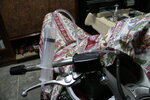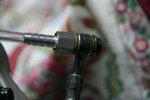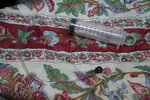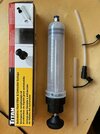Andrew Shadow
Site Supporter
In my opinion expecting a vacuum pump alone to completely rid a complicated hydraulic system of all air is misguided and a misuse of the vacuum pump on the part of the user. It is not the fault of the vacuum pump if it is being used for a purpose that it is not particularly good at. That does not diminish the value of the vacuum pump however. They are excellent tools for moving high volumes of fluid quickly and easily through the system when that is necessary. That can be for the purpose of draining a system, refilling a system, or flushing a system. That is primarily what I think that they should be used for. In addition to using a tool, knowing what tool to use when is also part of the process. Knowing the limitations of the tools being used is another part of that process. Making poor choices anywhere in that process reflects poorly on the person making the choice, not on the tool. As common as it is the old adage the right tool for the job is not just an adage.










